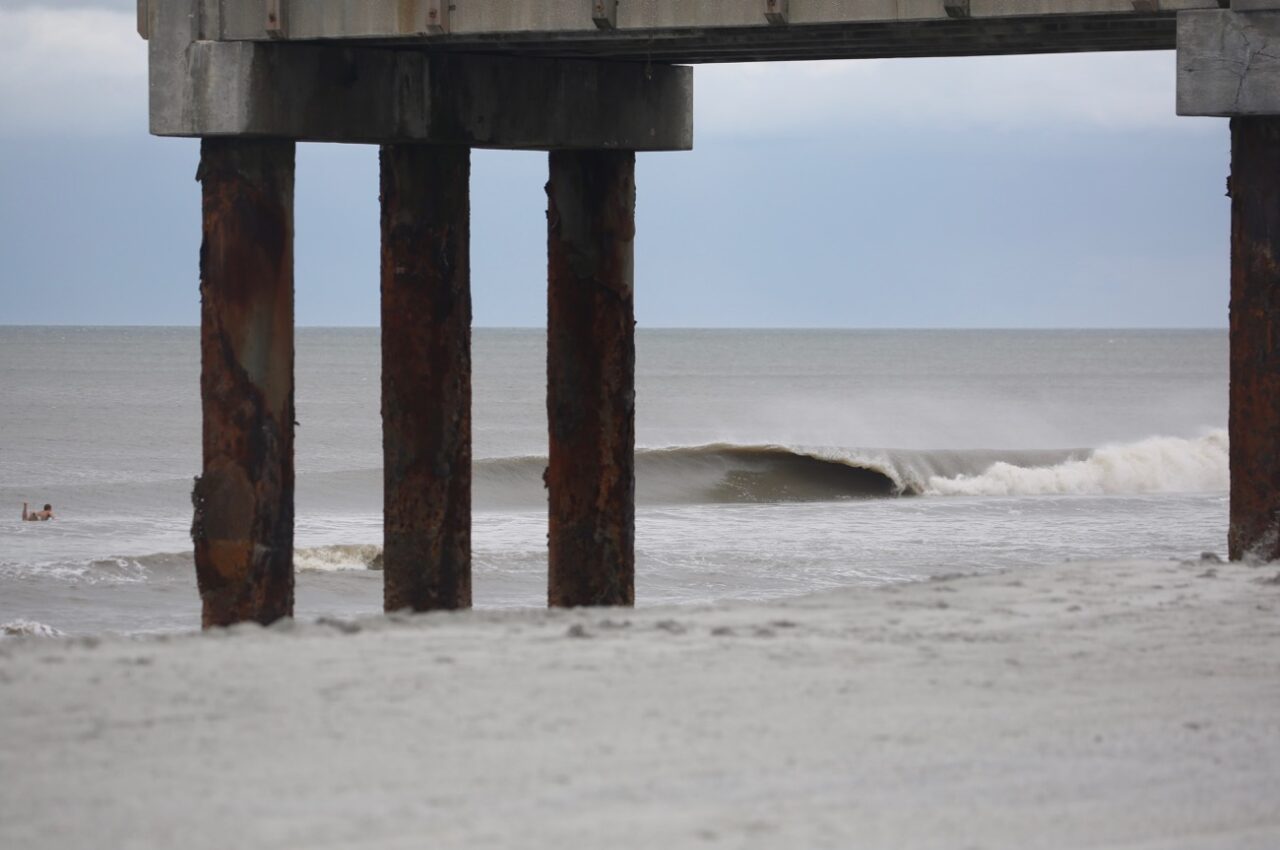
It was an awkward sight in early July when the St. Augustine Beach Pier, a reliable fishing and surfing spot for decades, was no longer over water.
The end of the pier was literally over sand, not salt water. Fishing and surfing enthusiasts were stumped, as the structure that provided plenty of bounty for those hobbies and lifestyle pursuits was literally high and dry.
The quandary was caused by a massive and expensive beach renourishment project by the U.S. Army Corps of Engineers that has been pumping some 2.5 million cubic yards of sand onto the shoreline to counteract years of erosion.
The problem? There was so much sand placed onto the beach that the pier was suddenly dozens of yards short of any water with a sand buffer between the end of the structure and the Atlantic Ocean. It’s a hallmark structure in tourism-rich St. Johns County and the host city of St. Augustine.
But thanks to Tropical Storm Debby which passed through Florida’s First Coast at the beginning of the week, the St. Augustine Beach Pier is returning to its nautical purpose.
While many locals and tourists alike were disappointed at the lack of ocean access from the pier, Army Corps officials assured pier enthusiasts that the excess sand to the east of the pier was placed there by design as part of the $33 million beach renourishment project.
Army Corps Spokesperson David Ruderman said if the project was designed to lessen erosion, it would be erosion that would return the pier to stand over water, and he said it might be relatively quickly.
“While the ongoing sand placement has temporarily left the pier ‘high and dry,’ waves and currents will in the weeks and months ahead reshape the constructed beach fill by spreading sand to the adjacent coast through a process known as equilibration,” Ruderman said in early July.
“Sand will be transported from the dry beach and deposited below the waterline within the active beach profile, which will help dissipate wave energy naturally generated by storms, for instance, thereby providing the intended coastal storm risk management benefits.”
Ruderman was correct about it taking only weeks to see ocean water return to the pilings beneath the pier. Thanks to Tropical Storm Debby, the end of the pier stands over water once again. Though this week after Debby passed through Florida’s First Coast, the water is just now reaching the end of the structure.
The wild surf reached about 6 feet high Tuesday, according to the National Oceanic and Atmospheric Administration weather buoy just off the coast of St. Augustine. Those pounding waves ate at the new sand that was placed in St. Augustine Beach surrounding the pier.
“The sand placement is designed to spread defensive resistance to wave and storm energy throughout the beach profile, thereby strengthening the entire coastal ecosystem,” Ruderman said.
“This process begins immediately after construction, with a full adjustment of the beach shape typically requiring months or multiple significant wave events to be complete. The pace of the re-shaping is largely dependent on wave and storm activity. The greater the coastal storm activity, the shorter the duration of the equilibration process. In time, the St Augustine Beach Pier will reach out into the ocean, we just cannot predict when.”
The complete beach renourishment project in St. Augustine Beach from Anastasia State Park south to A Street in the beach community is expected to be finished within weeks.




One comment
Danny White
August 7, 2024 at 11:27 am
Photos?
Comments are closed.